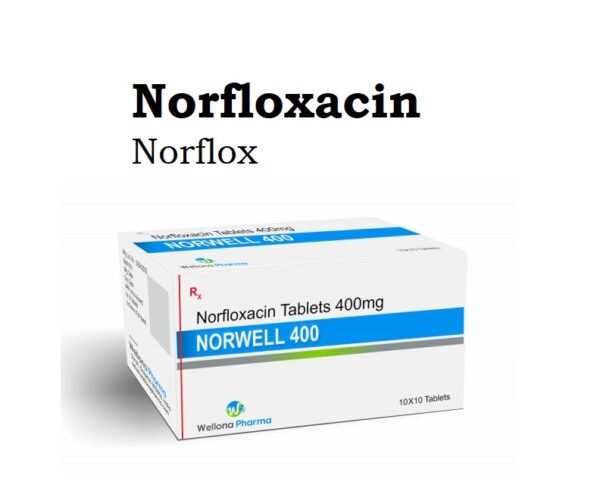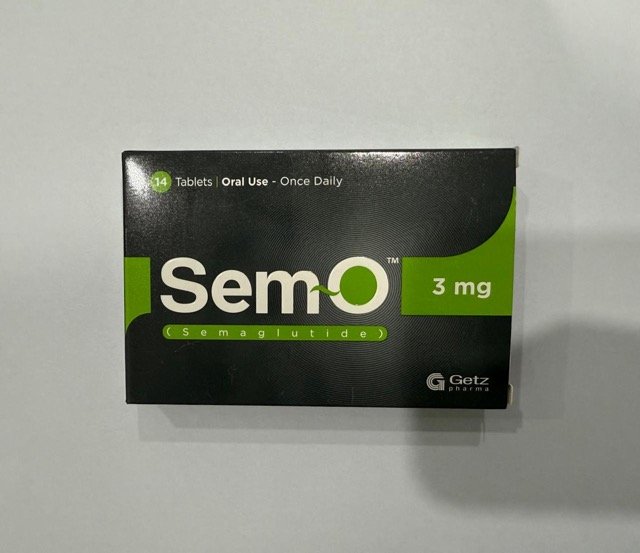Norfloxacin (Norflox) is an orally available antibiotic that belongs to the class of medicines called fluoroquinolones. It is used to treat urinary tract infections and diarrhea.
Norfloxacin (Norflox) Uses:
- Gram-negative and gram-positive bacteria that are susceptible produce simple and complex urinary tract infections.
- Sexually transmitted illnesses produced by N. gonorrhoeae, such as simple urethral and cervical gonorrhoea.
- Prostatitis because of E. coli
Note:
- The CDC no longer advises using fluoroquinolones to treat gonococcal illness as of April 2007.
-
Limitations of use:
- Because fluoroquinolones have been linked to severe adverse responses that can be incapacitating and even irreversible, reserve the use of norfloxacin for individuals who have no other options for treating acute, uncomplicated urinary tract infections (eg, tendinitis and tendon rupture, peripheral neuropathy, CNS effects).
-
Off Label Use of Norfloxacin in Adults:
- Infectious Diarrhea
- Prevention of spontaneous bacterial peritonitis
Norfloxacin (Norflox) Dose in Adults
Note:
- In US, Noroxin is no longer available.
Norfloxacin (Norflox) Dose in the treatment of Prostatitis:
- P/O:
- Every 12 hours 400 mg for 4-6 weeks
Norfloxacin (Norflox) Dose in the treatment of Uncomplicated gonorrhea:
- P/O:
- 800 mg as a single dose.
Note:
- As of April 2007, the CDC no longer advises using fluoroquinolones to treat simple gonococcal illness.
Norfloxacin (Norflox) Dose in the treatment of Urinary tract infections: Oral:
-
Uncomplicated due to E. coli, K. pneumoniae, P. mirabilis:
- For 3 days 400 mg two times a day
-
Uncomplicated UTI due to other organisms:
- For 7-10 days, 400 mg two times a day
-
Complicated UTI:
- For 10-21 days, 400 mg two times a day
Norfloxacin (Norflox) Dose in the treatment of Dysenteric enterocolitis (Shigella) (off-label):
- For three days, 400 mg two times a day
Norfloxacin (Norflox) Dose in the prevention of spontaneous bacterial peritonitis (SBP) (off-label):
-
Prior SBP or low protein ascites:
- Long-term prophylaxis:
- 400 mg once daily.
Norfloxacin (Norflox) Dose in the treatment of Variceal hemorrhage:
-
Short-term prophylaxis:
- For 7 days every 12 hours, 400 mg
- After a course of IV ceftriaxone with an active GI bleed, norfloxacin 400 mg every 12 hours for 7 days is also an option.
Norfloxacin (Norflox) Dose in the treatment of Traveler's diarrhea (off-label):
- Three days of 400 mg twice a day are recommended, while one dose might possibly work.
Use in Children:
Not indicated
Pregnancy Risk Factor C
- Animal reproduction studies revealed certain unfavourable outcomes.
- Norfloxacin is used to distribute amniotic fluid and cord blood.
- According to available data, norfloxacin has not been shown to increase the risk of teratogenic side effects in pregnancy.
Norfloxacin use during breastfeeding:
- Norfloxacin wasn't detected in the milk of nursing mothers who were given an oral 200mg dose.
- It is unknown if concentrations will be detectable at higher doses or after multiple doses.
- A manufacturer recommends that the mother decide whether to stop nursing her infant or discontinue using the drug. This is in consideration of the possibility of serious adverse reactions.
Dose in Kidney Disease:
- CrCl ≤30 mL/min/1.73 m²:
- 400 mg once daily
Dose in Liver Disease:
- In the manufacturer’s labeling, no dosage adjustment provided.
Common Side Effects of Norfloxacin (Norflox):
-
Central Nervous System:
- Dizziness
- Headache
-
Gastrointestinal:
- Nausea
- Abdominal Cramping
-
Hematologic & Oncologic:
- Eosinophilia
-
Hepatic:
- Liver Enzymes Increased
Less Common Side Effects Of Norfloxacin (Norflox):
-
Central Nervous System:
- Drowsiness
-
Dermatologic:
- Hyperhidrosis
- Pruritus
- Rash
-
Endocrine & Metabolic:
- Decreased WBC Count
- Increased Serum Alkaline Phosphatase
-
Gastrointestinal:
- Abdominal Pain
- Anorectal Pain
- Anorexia
- Constipation
- Diarrhea
- Dyspepsia
- Flatulence
- Loose Stools
- Vomiting
- Xerostomia
-
Genitourinary:
- Proteinuria
-
Hematologic And Oncologic:
- Decreased Platelet Count
- Leukopenia
- Thrombocytopenia
- Decreased Hematocrit
- Decreased Hemoglobin
-
Neuromuscular & Skeletal:
- Weakness
- Back Pain
-
Miscellaneous:
- Fever
Contraindications to Norfloxacin (Norflox):
- Hypersensitivity to any ingredient in the formulation, including quinolones or norfloxacin.
- Associated with quinolone usage, tendinitis history or tendon rupture.
Warnings and precautions
-
Modified cardiac conduction
- Fluoroquinolones can extend the QTc interval.
- Avoid administering this medication to patients who have a history of QTc prolongation, hypokalemia or hypomagnesemia that has not been corrected, or who are taking other drugs (such as Class Ia and Class III antiarrhythmics, cisapride, erythromycin, antipsychotics, and tricyclic antidepressants) that are known to prolong the QT interval.
-
Aneurysm of the aorta and dissection
- Fluoroquinolones, particularly in older people, are linked to aortic ruptures or dissections within two months.
- Fluoroquinolones should not be used by patients with a history of aneurysms or by those who are more vulnerable.
- This includes older patients as well as people with hypertension, peripheral atherosclerotic diseases, and genetic disorders affecting blood vessel alteration (such Marfan syndrome and Ehlers Danlos syndrome).
- Risk may be increased by prolonged treatment (e.g., >14 days).
-
Regulation of Glucose
- Fluoroquinolones are frequently linked to the emergence of severe, occasionally deadly hypoglycemia.
- Although they have been documented in people without diabetes, these episodes are most frequently experienced by diabetics.
- It is important to promptly identify and treat hypoglycemia.
- This effect may be caused by a variety of quinolones.
- This was evident most with gatifloxacin, which is no longer being marketed as a systemic formulation.
- The use of fluoroquinolones has been linked to hyperglycemia.
- Disordered glucose regulation should be checked out by a physician.
-
Hypersensitivity reactions
- With quinolone treatment, severe hypersensitivity responses have been recorded.
- These responses might run the gamut.
- Following numerous doses, you may suffer common allergic reactions (such as itchiness, urticaria, and rash) or severe idiosyncratic dermatologic symptoms (such as Stevens-Johnson syndrome or toxic epidermal necrolysis).
- If you have a skin rash or any other side effects, you should stop taking any medicines right away.
-
Phototoxicity:
- Avoid excessive sun exposure and take measures to minimise it (e.g., loose-fitting clothes, sunscreen).
- Reactions to phototoxicity can range from mild to severe.
- If you develop photosensitivity, discontinue using the product.
-
Warning: Serious adverse reactions
- Fluoroquinolones have the potential to result in serious adverse responses with potential for irreversibility, including tendinitis, tendon rupture, peripheral neuropathy, CNS effects, and CNS effects.
- Avoid using fluoroquinolones and stop taking norfloxacin right away if you encounter any of these serious side events.
- Patients of all ages and without any pre-existing risk factors have reported experiencing these reactions.
- Initiation can occur in as little as a few hours or even weeks.
-
CNS effects
- Fluoroquinolones are linked to an increased risk of CNS problems include toxic psychosis, raised intracranial pressure, and seizures.
- Additionally, it may cause panic attacks, nightmares, anxiety, and paranoia.
- It may occur after the first dose.
- Fluoroquinolones should be stopped immediately and avoided by patients with these reactions.
- Patients with a CNS disorder or other risk factors, such as a known or suspected CNS disorder or a seizure threshold lower or predisposing factors, should be cautious.
-
Peripheral neuropathy:
- Peripheral neuropathy risk has been connected to the use of fluoroquinolones.
- It could occur quickly after the therapy starts.
- If you experience symptoms of sensorimotor or sensory neuropathy, discontinue use.
- Patients who have had peripheral neuropathy in the past should not be used.
-
Tendinitis/tendon rupture:
- Fluoroquinolones have been linked to tendinitis and tendon rupture at all ages.
- Patients over 60 years old, recipients of solid organ transplants, and patients who are concurrently taking corticosteroids may be at greater risk.
- However, this has also been observed in patients with no risk factors.
- Achilles tendon ruptures have been reported most frequently.
- However, there have been reports of tendon injuries at other sites, such as the rotator cuff and biceps.
- Bilateral inflammation and rupture are both possible.
- Patients have reported cases both during the first few days or hours of medication as well as months thereafter.
- Risk factors for tendon rupture may include strenuous exercise, renal disease, and prior tendon diseases.
- Do not continue if you feel any tendon pain, swelling or inflammation.
- Patients with tendon disorders, tendinitis, or tendon rupture should not use this product.
-
Superinfection
- Extended use may result in bacterial and fungal superinfections including pseudomembranous collitis and C. diffficile-associated diarrhoea (CDAD).
- Several months after receiving antibiotics, CDAD was monitored.
-
Myasthenia gravis: [US Boxed Warning]:
- Can make myasthenia gravis-related muscular weakness worse.
- Myasthenia gravis sufferers shouldn't be prescribed this medicine.
- Severe exacerbations that resulted in fatalities and ventilator support have been documented.
-
Renal impairment
- Careful when you have a renal impairment
- Adjustment is required.
- Increased risk of tendon rupture.
-
Rheumatoid arthritis:
- Patients with rheumatoid arthritis should be cautious.
- Ttendon rupture risk is high
-
Syphilis:
- Syphilis cannot be treated with norfloxacin, and it may make symptoms worse. When a patient is diagnosed with gonorrhoea, they should all have a test for it.
Norfloxacin (United States: not available): Drug Interaction
|
Risk Factor C (Monitor therapy) |
|
|
Aminolevulinic Acid (Topical) |
Aminolevulinic Acid's photosensitizing impact may be enhanced by photosensitizing agents (Topical). |
|
BCG Vaccine (Immunization) |
Antibiotics may reduce the BCG vaccine's therapeutic effect (Immunization). |
|
Blood Glucose Lowering Agents |
Blood Glucose Lowering Agents' hypoglycemic effects may be strengthened by quinolones. Blood Glucose Lowering Agents' therapeutic impact may be lessened by quinolones. In particular, the use of quinolones may result in a loss of blood sugar control if an agent is being used to treat diabetes. |
|
Caffeine and Caffeine Containing Products |
The blood levels of caffeine and products containing caffeine may rise when norfloxacin is used. |
|
Corticosteroids (Systemic) |
Quinolones' harmful or poisonous effects could be increased. Particularly, there may be an increased risk of tendonitis and tendon rupture. |
|
CycloSPORINE (Systemic) |
CycloSPORINE metabolism may be slowed down by norfloxacin (Systemic). |
|
Haloperidol |
The QTcprolonging action of haloperidol may be enhanced by QT-prolonging agents (Indeterminate Risk - Avoid). |
|
Heroin |
Quinolones may intensify Heroin's harmful or toxic effects. |
|
Lactobacillus and Estriol |
The therapeutic effects of Lactobacillus and Estriol may be reduced by antibiotics. |
|
Mycophenolate |
Quinolones may lower the level of mycophenolate in the blood. Quinolones in particular may lower levels of mycophenolate's active metabolite. |
|
Nonsteroidal Anti-Inflammatory Agents |
Quinolones' neuroexcitatory and/or seizure-potentiating effects might be enhanced. Quinolones' serum concentration may rise in response to non-steroidal anti-inflammatory drugs. |
|
Porfimer |
The photosensitizing effect of Porfimer may be strengthened by photosensitizing agents. |
|
Probenecid |
Quinolone excretion may be decreased. Probenecid specifically may reduce the renal excretion of quinolone antibiotics. Quinolones' serum levels may rise in response to probenecid. |
|
QT-prolonging Agents (Highest Risk) |
The QTc-prolonging action of QT-prolonging Agents may be enhanced by QT-prolonging Agents (Indeterminate Risk - Avoid) (Highest Risk). When using these medications together, watch out for cardiac arrhythmias and a prolonged QTc interval. Patients may be considerably more at risk for QTc prolongation if they have additional risk factors. |
|
Varenicline |
Varenicline's serum levels may rise in response to quinolones. Management: Keep an eye out for any increased varenicline side effects when levofloxacin or other quinolone antibiotics are also being taken, especially in patients who have severe renal impairment. Different international standards exist for product labelling. Look up the relevant labelling. |
|
Verteporfin |
Verteporfin's photosensitizing effect may be strengthened by photosensitizing agents. |
|
Vitamin K Antagonists (eg, warfarin) |
Quinolones might make Vitamin K antagonists' anticoagulant effects even more potent. |
|
Risk Factor D (Consider therapy modification) |
|
|
Antacids |
Quinolones' absorption might be decreased. a problem only when quinolones are taken orally. To lessen the effects of this combination, avoid giving quinolones and antacids at the same time. Optimal dosage separation recommendations differ depending on the particular quinolone. Bicarbonate of sodium is an exception. |
|
Calcium Salts |
Quinolones' absorption might be decreased. only when both drugs are administered orally. Examples include calcium chloride. |
|
Delamanid |
Quinolones may increase Delamanid's ability to extend QTc. Management: If at all possible, avoid concurrent use. Electrocardiograms (ECGs) should be frequently checked throughout the whole delamanid therapy duration if coadministration is unavoidable. A separate monograph is dedicated to discussing exceptions. |
|
Didanosine |
Didanosine's serum levels may be reduced by quinolones. Didanosine may lower the level of quinolones in the serum. Treatment: Give oral quinolones at least two hours prior to or six hours following didanosine. Check for diminished quinolone therapeutic effects, especially if dosages cannot be separated as advised. Didanosine with an unbuffered enteric coating is exempt from this rule. |
|
Iron Salts |
Quinolones' serum concentration can drop. Treatment: Give oral quinolones at least several hours before (four hours for moxi- and sparfloxacin, two hours for others) or after (six hours for cipro/dela-, four hours for lome-, three hours for gemi-, and two hours for levo-, nor-, oflox-, pefloxacin, or nalidixic acid) taking oral iron salts. Ferric Gluconate, Ferric Hydroxide Polymaltose Complex, Ferric Pyrophosphate Citrate, and Ferumoxytol are exceptions. |
|
Lanthanum |
Quinolones' serum concentration can drop. Treatment: Give oral quinolone antibiotics at least an hour before or after lanthanum, whichever comes first. |
|
Magnesium Salts |
Quinolones' serum concentration can drop. Treatment: Give oral quinolones before or after oral magnesium salts, depending on the drug (8 h for moxi, 6 h for cipro/dela, 4 h for lome/pe, 3 h for gemi, and 2 h for levo, nor, or ofloxacin or nalidixic acid). |
|
Multivitamins/Minerals (with ADEK, Folate, Iron) |
Quinolones' serum concentration can drop. Particularly, oral quinolone antibiotics may be less effectively absorbed when used with polyvalent cations found in multivitamin supplements. Administration of the oral quinolone at least 2 hours before or 6 hours after the intake of a multivitamin containing polyvalent chelators will help reduce interactions. |
|
Multivitamins/Minerals (with AE, No Iron) |
Quinolones' serum concentration can drop. Particularly, elements in the multivitamin/mineral supplement may hinder quinolone medicines' absorption. Treatment: By taking the oral quinolone at least two hours before or six hours after taking the dose of a multivitamin containing polyvalent cations, interactions can be reduced (i.e., calcium, iron, magnesium, selenium, zinc). |
|
Quinapril |
Quinolones' serum concentration can drop. Treatment: To lessen the possibility of an interaction, provide oral quinolones and quinapril at least two hours apart. If both of these medicines are administered at the same time, keep an eye out for any quinolone efficacy reduction. |
|
Sevelamer |
Quinolones' absorption might be decreased. Treatment: Oral quinolones should be taken at least two hours before or six hours after sevelamer. |
|
Sodium Picosulfate |
Antibiotics may reduce Sodium Picosulfate's therapeutic impact. Management: If a patient previously used or is currently using an antibiotic, think about utilising an alternative product for bowel cleansing prior to a colonoscopy. |
|
Sucralfate |
Quinolones' serum concentration can drop. Treatment: Give oral quinolones at least two hours prior to or six hours following the dosage of sucralfate. Greater dose spacing may further reduce the possibility of a harmful interaction. |
|
Theophylline Derivatives |
Theophylline derivatives' metabolism may be slowed down by quinolones. The most dangerous antibiotics include ciprofloxacin and enoxacin. The potential for any of the separate drugs to cause seizures may be increased by theophylline/quinolone therapy. Dyphylline is an exception. |
|
Typhoid Vaccine |
The Typhoid Vaccine's therapeutic benefits may be reduced by antibiotics. The only strain impacted is the live attenuated Ty21a strain. Treatment: Patients receiving systemic antibacterial drugs should refrain from receiving the live attenuated typhoid vaccination (Ty21a). It is recommended to wait at least 3 days following the last dose of antibacterial medication before administering this vaccine. |
|
Zinc Salts |
Quinolones' serum concentration can drop. Treatment: Oral quinolones should be administered at least a few hours before or after oral zinc salts (8 h for moxi, 6 h for cipro/dela, 4 h for lome, 3 h for gemi, and 2 h for levo, nor, pe, or ofloxacin or nalidixic acid). Exceptions: chloride of zinc. |
|
Risk Factor X (Avoid combination) |
|
|
Aminolevulinic Acid (Systemic) |
Aminolevulinic Acid's photosensitizing impact may be enhanced by photosensitizing agents. |
|
BCG (Intravesical) |
Antibiotics may lessen BCG's therapeutic effects (Intravesical). |
|
Cholera Vaccine |
The therapeutic benefit of the cholera vaccine may be reduced by antibiotic use. Management: Cholera vaccine should not be administered to individuals taking systemic antibiotics or within 14 days after taking oral or parenteral antibiotics. |
|
Nadifloxacin |
Quinolones' harmful or poisonous effects could be increased. |
|
Nitrofurantoin |
May reduce Norfloxacin's therapeutic impact. |
|
Strontium Ranelate |
Quinolones' serum concentration can drop. Management: It is advised that strontium ranelate medication be stopped during quinolone therapy in order to reduce any potential effects of strontium ranelate on quinolone antibiotic concentrations. |
Monitoring Parameters:
- If therapy is prolonged, monitor CBC, renal, and hepatic function periodically.
How to administer Norfloxacin (Norflox)?
P/O:
- Hold antacids, sucralfate, multivitamins, or dietary supplements containing iron, zinc, magnesium, or aluminium for at least two hours before to or following the administration of norfloxacin.
- Do not administer simultaneously.
- Give with water on an empty stomach
Mechanism of action of Norfloxacin (Norflox):
- The antibiotic norfloxacin inhibits DNA gyrase.
- The DNA's superhelical shape is preserved by the crucial bacterial enzyme DNA gyrase.
- Transcription, transposition, recombination, DNA replication, and DNA repair all require DNA gyrase.
- Bactericidal
Absorption:
- P/O:
- Rapid, up to 40%
Protein binding:
- 10%-15%
Metabolism:
- Hepatic
Half-life elimination:
- 3-4 hours.
- Renal impairment (CrCl ≤30 mL/min):
- 6.5 hours.
- Elderly:
- 4 hours
- Time to peak serum concentration:
- 1-2 hours
Excretion:
- Urine (26% to 32% as unchanged drug; 5% to 8% as metabolites).
- Feces (30%)
International Brands of Norfloxacin:
- ALTI-Norfloxacin
- APO-Norfloxacin
- CO Norfloxacin
- PMS-Norfloxacin
- TEVANorfloxacin
- Ambigram
- Anquin
- Ansor
- Apiflox
- Baccidal
- Barazan
- Bexinor
- Biofloxin
- Chibroxin
- Chibroxine
- Chibroxol
- Ectalin
- Epinor
- Euroflox
- Flox
- Floxacin
- Fluseminal
- Fulgram
- Gonorcin
- Gyrablock
- Janacin
- Laxifloxin
- Lexinor
- M-Flox
- Manoflox
- Microxin
- Mitatonin
- Myfloxin
- Naflox
- Negaflox
- Nolicin
- Noracin
- Norax
- Norbactin
- Norbactin Eye Drops
- Norf
- Norflohexal
- Norflox
- Norflox Eye
- Norflox-N
- Norfloxacine
- Norfloxin
- Norfloxin-400
- Norlox
- Normac
- Normax
- Normax Eye Ear Drops
- Noroxin
- Noroxin Oftalmico
- Noroxine
- Norsol
- Nufloxib
- Oprelex
- Oranor
- Orsanac
- Quinox
- Roxin
- Sefnor
- Sofasin
- Uridon
- Uriflox
- Urigen
- Urobacid
- Uroctal
- Uroflox
- Uronor
- Uroxacin
- Uroxin
- UT-in
- Winaflox
- Xacin
- Xasmun
- Zoroxin
Norfloxacin Brand Names in Pakistan:
Norfloxacin Eye Drops 0.3 % W/V |
|
| Bactinor | Remington Pharmaceutical Industries (Pvt) Ltd. |
| Flonox | Innvotek Pharmaceuticals |
Norfloxacin 200 mg Tablets |
|
| Albact | Nabiqasim Industries (Pvt) Ltd. |
Norfloxacin 400 mg Tablets |
|
| Al Flox | Alina Combine Pharmaceuticals (Pvt) Ltd. |
| Al Flox | Alina Combine Pharmaceuticals (Pvt) Ltd. |
| Alenbit | Meezab International |
| Axonor | Zinta Pharmaceuticals Industries |
| Baccidal | Gray`S Pharmaceuticals |
| Bactinor | Remington Pharmaceutical Industries (Pvt) Ltd. |
| Ecoflaxin | Hygeia Pharmaceuticals |
| Floxanor | Geofman Pharmaceuticals |
| Floxanor | Geofman Pharmaceuticals |
| Floxin | Hilton Pharma (Pvt) Limited |
| Fynklocin | Fynk Pharmaceuticals |
| Glosiflox | Siza International (Pvt) Ltd. |
| Helinox | Helicon Pharmaceutek Pakistan (Pvt) Ltd. |
| Jnor | Jawa Pharmaceuticals(Pvt) Ltd. |
| Lonar | Lowitt Pharmaceuticals (Pvt) Ltd |
| Medi-Nor | Medicon Pharmaceuticals Industries (Pvt) Ltd |
| Nefrolon | Shaheen Pharmaceuticals |
| Nefrox | Aries Pharmaceuticals (Pvt) Ltd |
| Newsedal | Neutro Pharma (Pvt) Ltd. |
| Nf-400 | Fozan Pharmaceuticals Industriers (Pvt) Ltd |
| Noacin | Valor Pharmaceuticals |
| Nocin | Miracle Pharmaceuticals(Pvt) Ltd |
| Nolicin | Novartis Pharma (Pak) Ltd |
| Norasia | Ambrosia Pharmaceuticals |
| Norflomed | Mediate Pharmaceuticals (Pvt) Ltd |
| Norflosaf | Saaaf Pharmaceuticals |
| Norish | Epharm Laboratories |
| Norocin | Bosch Pharmaceuticals (Pvt) Ltd. |
| Noroquine | Multinational Buisness Link |
| Noroxin | Obs |
| Noroxo | Alliance Pharmaceuticals (Pvt) Ltd. |
| Nortec | Panacea Pharmaceuticals |
| Noryan | Roryan Pharmaceutical Industries (Pvt) Ltd |
| Noxacin | Medicraft Pharmaceuticals (Pvt) Ltd. |
| Olonaf | Zanctok Pharmaceuticals |
| Qunor | Askari Pharmaceuticals. |
| Renor | Genome Pharmaceuticals (Pvt) Ltd |
| Robinex | Alkemy Pharmaceutical Laboratories (Private) Ltd. |
| Robnex | Alkemy Pharmaceutical Laboratories (Private) Ltd. |
| Silnor | Silver Oak Corporation. |
| Trizolin | Medisure Laboratories Pakistan (Pvt.) Ltd. |
| Unique | Dr. Raza Pharma (Private) Limited |
| Ura | Rasco Pharma |
| Urac | Rock Pharmaceuticals |
| Uracin | Siza International (Pvt) Ltd. |
| Urid | Bloom Pharmaceuticals (Pvt) Ltd. |
| Uriflox | Werrick Pharmaceuticals |
| Uritac | Wilsons Pharmaceuticals |
| Uroquin | Platinum Pharmaceuticals (Pvt.) Ltd. |
| Utibex | Cibex (Private) Limited |
| Webnor | Webros Pharmaceuticals |
| Zoroxin | Hizat Pharmaceutical Industries (Pvt) Ltd. |



.jpeg)



